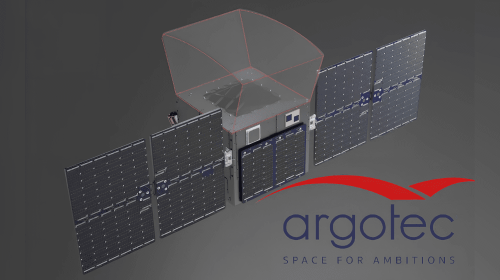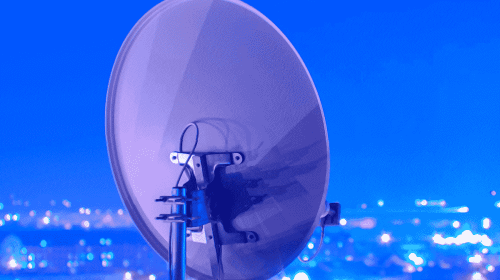Feb 19, 2018
One of the earliest companies to get involved in “NewSpace” was O3b Networks, Ltd. The name O3b refers to the “Other 3 Billion,” or the population of the world where broadband internet services are not generally available.
O3b, a wholly owned subsidiary of SES S.A, manufactures and operates a fleet of MEO (Medium Earth Orbit) satellites that provide broadband communications, primarily for MNO (Mobile Network Operators) and ISPs (Internet Service Provider), who in turn distribute the bandwidth to their subscribers. O3b’s parent company, SES, is one of the largest providers of GEO (Geosynchronous Earth Orbit) satellites delivering broadband satellite, including NSS-10 and NSS-12 used by BusinessCom to deliver broadband satellite services in both west and east hemispheres. O3b enhances the SES solutions portfolio with a new approach.
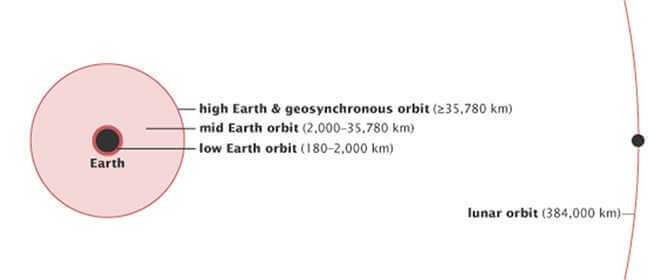 Credit: NASA Earth Observatory Orbits Catalog
Credit: NASA Earth Observatory Orbits Catalog
Traditional GEO satellites are fixed in position over the equator, and operate at a distance of 35,786 Km (22,236 miles) above earth. They cover large portions of the earth. While capacity on GEO satellites is rapidly expanding with the addition of HTS (High Throughput Satellites), traditionally they have been somewhat limited. A significant issue, for certain applications, in particular voice, video, interactive gaming or device control, is latency, or delay. Because of the great distance above the earth where GEO satellites orbit, and the speed of light, at which satellite radio waves travel, it takes about 1/3 of a second for a trip from earth to satellite and back to earth. A round trip “ping” is about 650 ms or 2/3 of a second. This is a big disadvantage for interactive gaming, or perhaps remote drone control, and can be inconvenient for voice and video calls, particularly if there are multiple satellite hops involved.
MEO satellites such as O3b operate at about 8000 Km (5000 miles), which is about one quarter the distance, hence latency is reduced significantly. The latency is not at the level of pending LEO (Low Earth Orbit) satellite constellations which will begin to compete with terrestrial latencies over the next couple years and beyond, but it’s a significant improvement. The O3b satellites use Ka band frequencies, delivering “hot” or powerful spot beams to the regions they cover, as they orbit overhead.
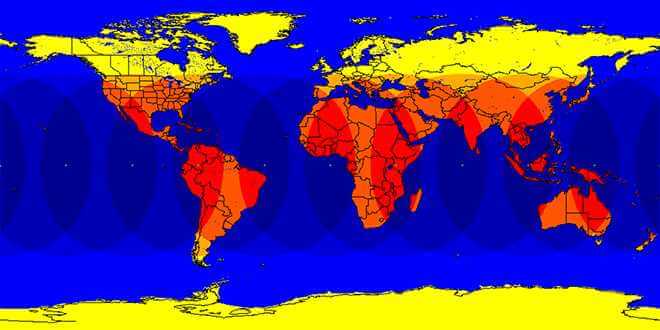 Wikipedia: O3b satellite constellation showing visibility of ring of MEO satellites around the equator. Rendered using the SaVi Satellite constellation Visualization package by Lloyd Wood, author of SaVi
Wikipedia: O3b satellite constellation showing visibility of ring of MEO satellites around the equator. Rendered using the SaVi Satellite constellation Visualization package by Lloyd Wood, author of SaVi
Unlike GEO satellites, that are fixed in orbit, MEO satellites are orbiting the earth much faster, and require tracking antennas on the ground. Antennas have to track one satellite as it comes over the horizon from one side, and hand it off to another antenna as it heads out to the horizon on the other side. As flat panel antenna development continues, and prices fall, they will replace the parabolic antennas being used now. Being closer to the ground, MEO satellites can use powerful, directed satellite beams that can deliver high bandwidth for backhaul and similar applications.
The first four satellites were launched on June 25, 2013 on a Soyuz-2 rocket by Arianespace. They are all functioning properly. A hardware defect was found in the first satellites, so the second deployment was postponed until the problem was resolved and repaired. The next set of four satellites were launched by the same type of rocket on July 10, 2014 from French Guiana. Another set of four were launched in December 2014.
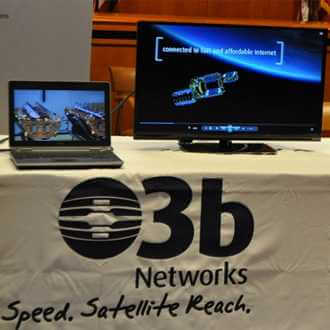
Among early customers was “MS Quantum of the Seas” a cruise ship owned by Royal Caribbean International. Branded “Voom,” the service has been rolled out on the other ships in their fleet. Another early project was a government contract with NASA in 2015 that provided connectivity for NOAA (National Oceanic and Atmospheric Administration) in American Samoa.
O3b is placing four more MEO satellites in orbit in March of this year (2018), bringing the total to 16 satellites. The additional satellites will provide increased connectivity options through enhanced coverage, and more performance.
O3b is just getting started. SES has contracted with Boeing Satellite Systems to build a fleet of 7 “super-powered” MEO satellites. This new fleet, branded mPOWER, will support up to 30,000 beams that are fully shapeable, which means they may be aimed, or directed to more specific locations, preserving power and increasing efficiency and therefore performance. Normally satellites have large, very wide beams. By concentrating the power into smaller, tightly formed beams, much more capacity can be provided. Indeed, the new satellites are expected to provide multi-terabits of capacity. NewSpace is not just a cool idea – it’s happening, and O3b has led the way, and set the bar for NGSO (Non-Geosynchronous Orbit) deployments by others who want to jump into the fray.

